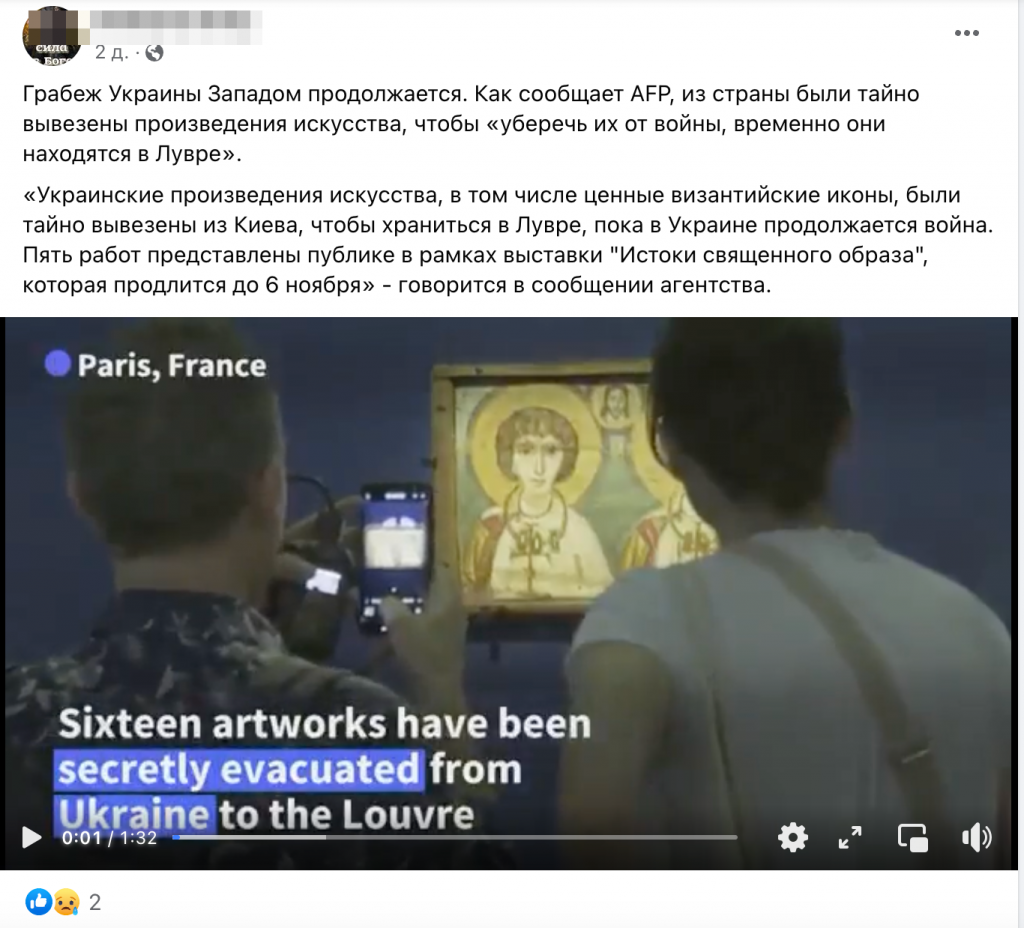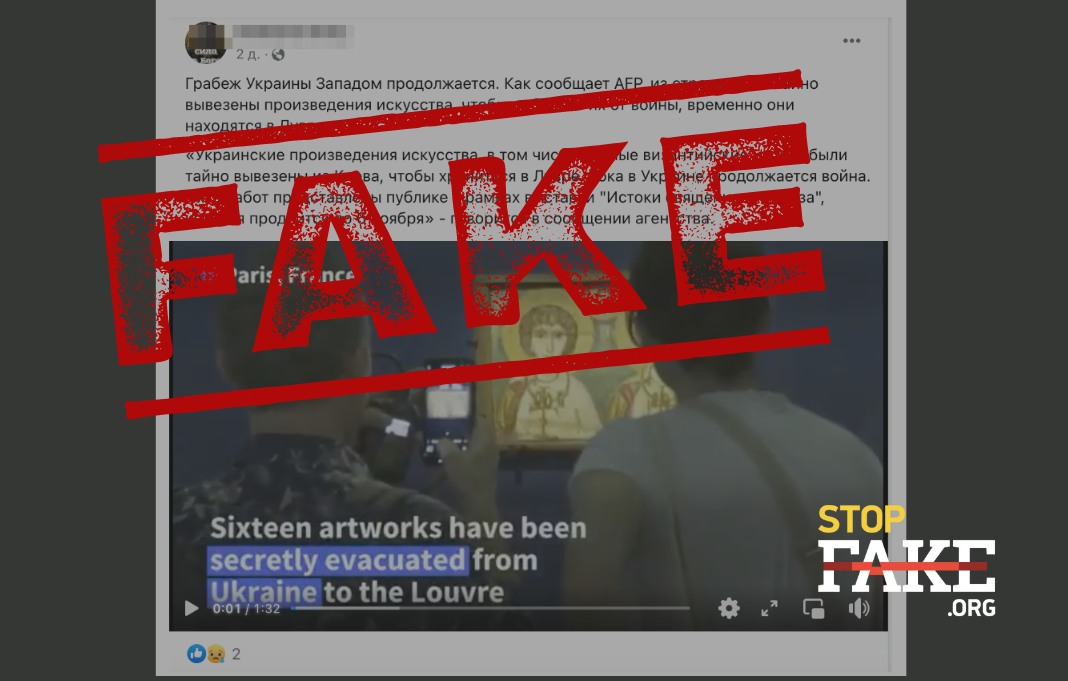Ukraine decided to temporarily evacuate sixteen Byzantine icons from the Khanenko Museum to the Louvre due to continuous Russian shelling of the civilian infrastructure and cultural heritage sites. The Ministry of Culture and Information Policy of Ukraine assures that the icons will return home as soon as the situation allows. As a reminder, in October 2022, as a result of a Russian missile attack, the historical building and interior decoration of the Khanenko Museum were damaged.
The Russian media, as well as some social media users, are spreading misinformation that the West is allegedly secretly exporting works of art from Ukraine to, as the Russian media ironically put it, “save them from war.”

“The West’s robbery of Ukraine continues. “Ukrainian works of art, including valuable Byzantine icons, were secretly taken out of Kyiv to be kept in the Louvre while the war in Ukraine continues,” the publications state.
Sixteen Byzantine icons were indeed evacuated from the Bohdan and Varvara Khanenko National Museum of Art to the Louvre, five of them are now on display at the exhibition “At the Origins of the Sacred Image. Icons from the Khanenko Museum”. As reported by the Ministry of Culture and Information Policy of Ukraine, the teams of the cultural ministries of Ukraine and France, experts from the Louvre and the Bohdan and Varvara Khanenko National Museum of Art began to cooperate in 2022. They made it possible to deliver part of the Ukrainian national collection to France on May 15, 2023, under conditions of high secrecy, via Poland and Germany under a military convoy and under the direct control of the International Alliance for the Protection of Heritage in Conflict Zones (ALIPH).
No “theft” of the cultural heritage of Ukraine is being done by the West. The Ukrainian Culture Ministry assures that the icons will return home as soon as possible. Moreover, the evacuation of Byzantine icons was a forced step. Back in October 2022, the historical building and interior decoration of the Khanenko Museum were damaged by a Russian missile strike. Although the exhibits were moved to storage early in the war, temperature fluctuations caused by damage to the building and power outages due to continuous Russian shelling of Ukraine’s energy infrastructure took a toll on the artworks.
“Since the war began, like other museums, we have been concerned about how we can support our Ukrainian colleagues. In the autumn, faced with the aggravation of the conflict, we decided to make this rescue,” said the director of the Louvre Museum, Laurence de Carre, in a comment to the AFP news agency. She also noted that the Louvre “is particularly concerned about the risk of theft and illegal handling that could affect works of art and relics if they remained in Ukraine.”
The coordinator of the cooperation between the Khanenko Museum and the Louvre, Olha Apenko, in a comment to LB.ua, drew attention to the fact that the evacuation of Byzantine icons will not only help protect them from war, but will also allow art historians to study these unique works of art. The Khanenko Museum owns icons created in the VI-VII centuries in Egypt, Constantinople, Syria and Palestine. “There are 10 to 20 copies of such ancient icons left in the world. And four of them are from the Khanenko collection. By studying the age of the wood, the composition of the paint and impurities in it, we will be able to accurately localize and date them. This is fundamental knowledge and this is precisely the importance of cooperation with the Louvre. This is a fantastic case,” explains Olha Apenko.
Today, the Louvre exhibits 5 of the 16 works brought to France: four encaustic icons of the 6th and 7th centuries, originating from the monastery of St. Catherine on Mount Sinai, and a Constantinople micromosaic icon of the late 13th and early 14th centuries. The rest of the icons were handed over for restoration.
As a reminder, from February 24, 2022 to May 15, 2023, 623 Ukrainian cultural objects damaged or destroyed as a result of Russian military aggression were registered in the register of the Ministry of Culture of Ukraine. Of them, 80 are of national importance, 484 are of local importance, and 59 have just been discovered. Analysts believe that Russia stole more than 15,000 items of Ukrainian fine art and artifacts throughout the war. These include valuable icons of the 17th and 20th centuries, Italian sculptures of the 18th century, works of art by August von Bayer and the Anglo-Dutch master Sir Peter Lely. Only from Kherson Art Museum occupiers illegally transported a largest collection of works by Oleksiy Shevkunenko, paintings by Tatiana Yablonska, Mykola Hlushchenko Zinaida Serebryakova, Petro Lela, Ivan Aivazovsky, Mykhailo Vrubel were stolen.
Ukraine accuses Russia of violating the 1954 Hague Convention on the Protection of Cultural Property in the Event of Armed Conflict, adopted after World War II. It prohibits the parties that signed it (Ukraine and Russia – signatories) from “any form of theft” of cultural values.
Previously, StopFake refuted the Kremlin’s misinformation about Ukraine allegedly attacking its own cultural heritage sites.





